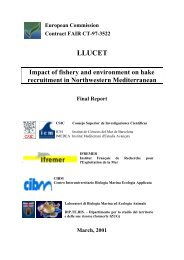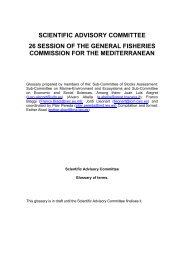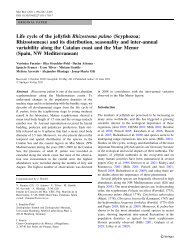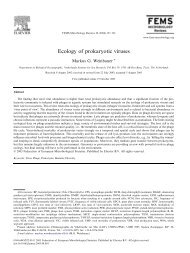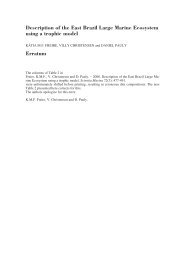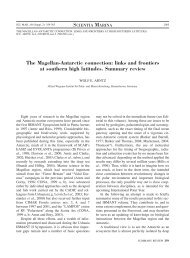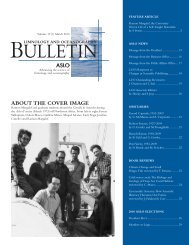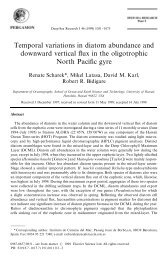REPORT OF THE WORKSHOP ON TRAWL SURVEY ... - FAO.org
REPORT OF THE WORKSHOP ON TRAWL SURVEY ... - FAO.org
REPORT OF THE WORKSHOP ON TRAWL SURVEY ... - FAO.org
You also want an ePaper? Increase the reach of your titles
YUMPU automatically turns print PDFs into web optimized ePapers that Google loves.
Increasing interest in the use of survey-only methods for assessment and management led to<br />
the establishment of the current EU FP6 contract FISBOAT (Fisheries Independent Survey<br />
Based Operational Assessment Tools; 2004-07), coordinated by IFREMER. This project aims<br />
to evaluate how these methods perform in producing advice within defined management<br />
criteria, such as determining the optimum level of harvesting, to study the sensitivity of the<br />
methods in anticipating changes in population biology and survey performance, and to<br />
compare, through case studies, test results and the corresponding management advice with<br />
historical records and actual events in specified fisheries. A paper by Pomarede et al. (2006)<br />
provides an example application from FISBOAT for herring stocks.<br />
There is an increasing interest in the use of suites of indicators for assessing the status of<br />
stocks and ecosystems (Rochet et al. 2005). Surveys can provide a range of metrics related to<br />
size and age composition, community size-spectra, spatial distribution, fish condition,<br />
size/age at maturity, species diversity etc. that may contribute to integrated assessments using<br />
indicators.<br />
Other uses of survey data by ICES<br />
Fish surveys offer a unique platform for collecting a wide range of data on oceanography,<br />
biota and habitats across large sea areas. The data on trawl catches also are a rich source of<br />
information for use in ecosystem studies. The EU contract EVARES (Beare et al. 2003)<br />
provides a useful listing of non stock assessment uses (plus references) for the bottom trawl<br />
surveys that are reviewed, including collection of biological data to meet EC Data Collection<br />
Regulation targets, abundances of non-commercial species, spatial distribution data, stomach<br />
content analyses, hydrography, genetics studies, ecological studies, contaminant studies,<br />
climate studies, acoustics studies and other uses.<br />
A major issue with the use of surveys for other purposes is the quality control of data and<br />
consistency of standards over time. For example, quality control of species identification is an<br />
important current topic with IBTS, and photographic identification guides are being compiled.<br />
Investigations of historical North Sea IBTS data revealed that 20 species pairs (~ 30% of<br />
species in the North Sea database) may be affected by identification errors, reducing the<br />
usefulness of the IBTS data base for diversity studies (Daan, 2001).<br />
North Sea haddock: an example of the use of surveys in an ICES assessment<br />
Haddock (Melanogrammus aeglefinus) is an important demersal gadoid species taken in trawl<br />
fisheries in the North Sea. The IBTS trawl surveys show that the distribution is mainly in the<br />
northern North Sea (Fig. 7). Both juveniles and adults are widespread across the northern<br />
North Sea. The stock is characterised by pulses of very strong recruitment. The 1999 year<br />
class was one of the strongest on record. Such strong year classes result in substantial<br />
discarding, exacerbated by slow growth in the strong year class and subsequent year classes<br />
subject to density dependence at high overall stock size.<br />
The stock is assessed by the ICES Working Group on the Assessment of Demersal Stocks in<br />
the North Sea and the Skagerrak (WGNSSK), and the reader is referred to recent reports of<br />
the WG on the ICES website for further details not covered here. The assessment is fully age<br />
structured, using Extended Survivors Analysis tuned with the IBTS Q1 international survey<br />
and the separate English and Scottish groundfish Quarter 3 surveys (rather than the<br />
international Q3 survey to which these surveys contribute). The Scottish and English surveys<br />
54




